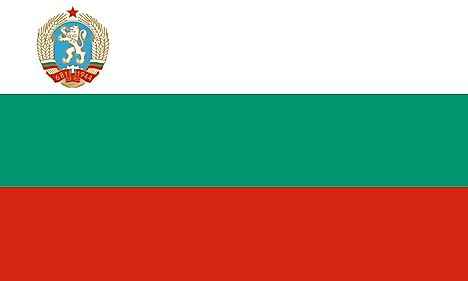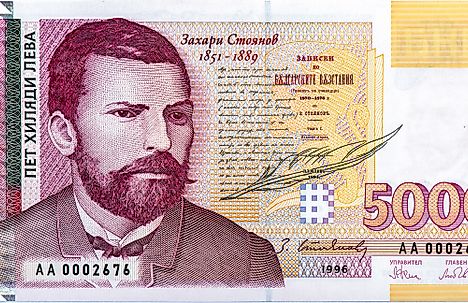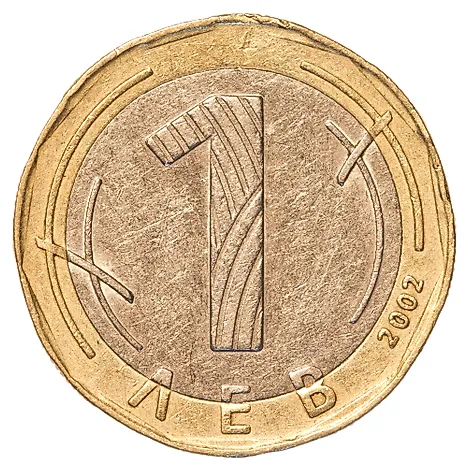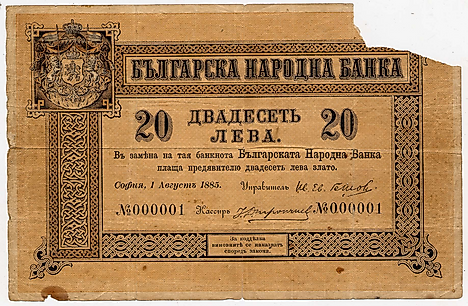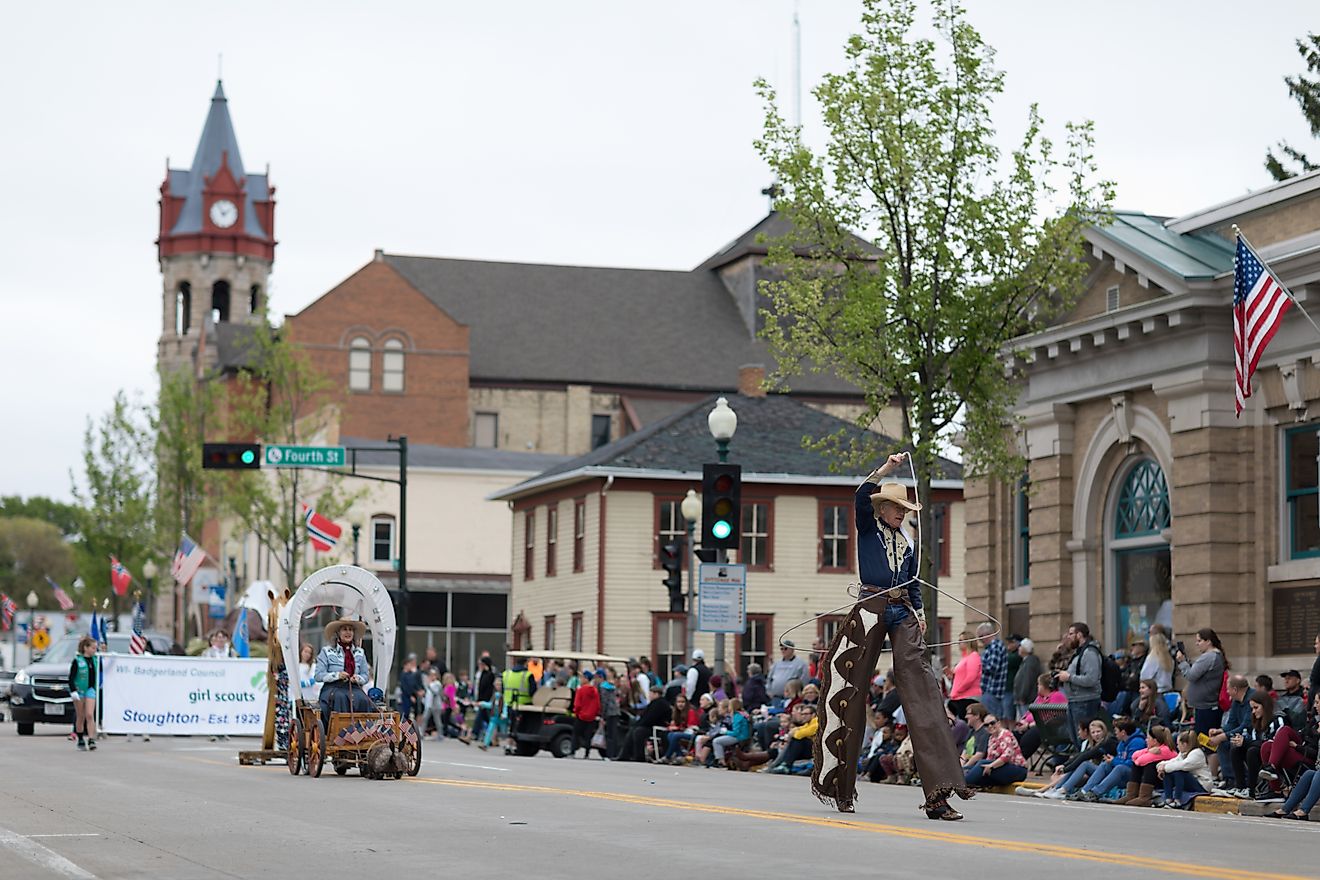Flags, Symbols & Currency of Bulgaria
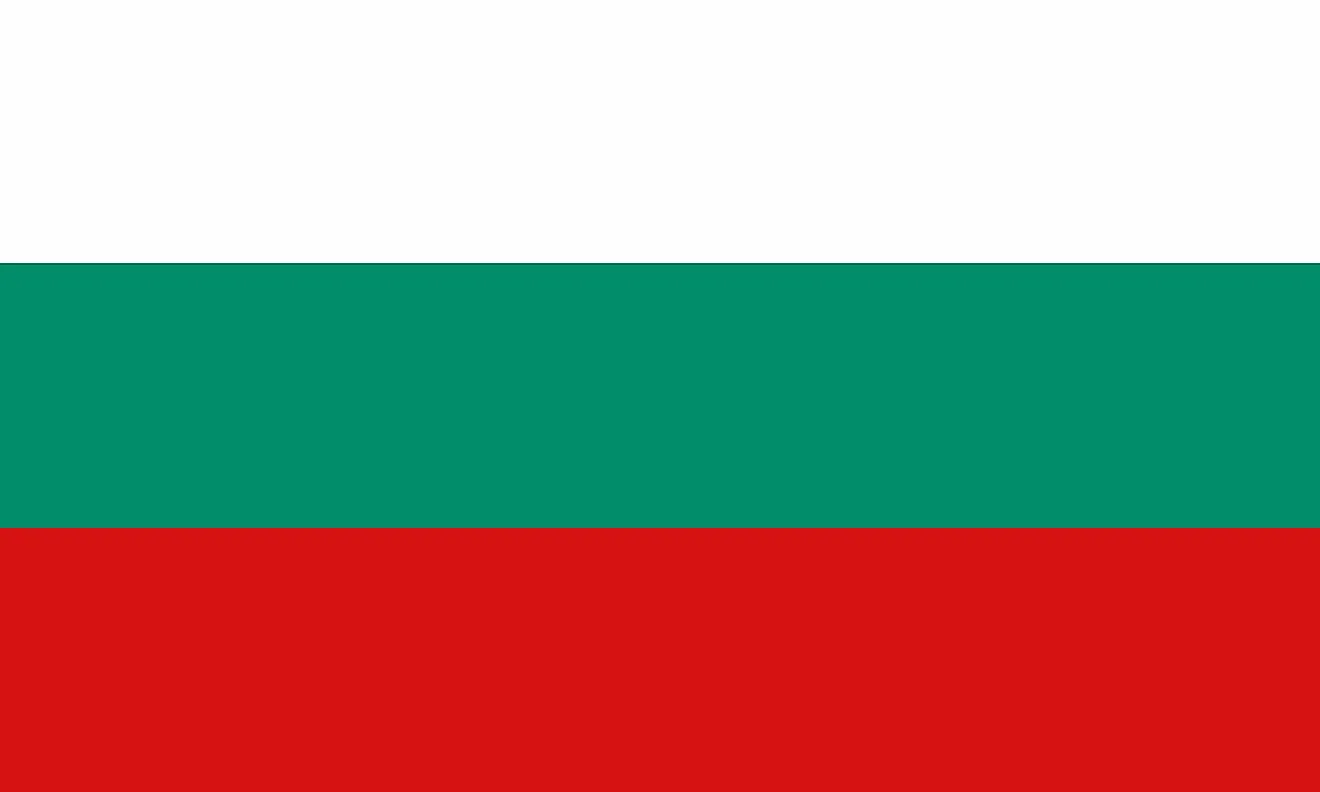
The current National Flag of Bulgaria was officially adopted on November 22, 1990.
The National Flag of Bulgaria is a tricolor and rectangular-shaped featuring three equal horizontal bands of white (top), green, and red. The white color symbolizes peace, love, and freedom. The green color represents the agricultural wealth of the nation and the red color symbolizes the independence struggle and the courage of the Bulgarians. The flag has a height to width proportion ratio of 3:5.
History of the Flag of Bulgaria
The flag of Bulgaria was originally adopted in 1878-1879 following the Russo-Turkish War that resulted in the liberation of Bulgaria. The design of the national flag was derived from the ethnic association of Bulgarians with the Russians. The white-blue-red colors of the Russian Tricolor were modified by substituting a green band in the Bulgarian flag. In the 1940s, the flag was changed to include the emblem of the People’s Republic of Bulgaria. In 1971, the flag was again modified to change the date on the ribbon found on the emblem. During the Communist’s rule, their coat of arms – the red star and other socialist symbols were added and placed in the upper hoist corner of the flag. The flag was again changed in 1990 following the downfall of Communism. It was during this time that the flag design that was originally adopted in the 19th century was officially adopted as the Nation’s national flag.
Symbols of Bulgaria
The National Coat of Arms of Bulgaria
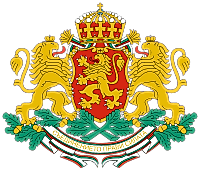
The Coat of Arms of Bulgaria was adopted in 1997. It is composed of two golden crowned lions supporting a dark red shield containing a third golden lion. Above the shield is the historical crown of Bulgaria (originally the crowns of Bulgarian Tsars of the 2nd Bulgarian State). The crown contains five crosses with another cross placed over it. The two golden-crowned lions faces the shield on either side and stands above two crossed fruited oak branches. Below the shield and over the oak branches, is a white scroll with a tricolor border depicting the national motto inscribed in gold letters: “United we stand Strong”.
National Motto
Съединението прави силата (Bulgarian) "Saedinenieto pravi silata" (transliteration) "Unity makes strength"
National Anthem
- Anthem Title: "Mila Rodino" ("Dear Motherland")
- Composer: Tsvetan Radoslavov
- Lyricist: Tsvetan Radoslavov
- Year of Completion: September 8, 1964
- Date of Adoption: July 12, 1991 (by Constitution of Republic of Bulgaria)
The National Anthem of the Republic of Bulgaria is the song "Mila Rodino" ("Dear Motherland"). The anthem is based on the music and lyrics of the song "Gorda Stara Planina", written in 1885 by Tsvetan Radoslavov, after his participation in the Serbo-Bulgarian war. "Mila Rodino" became the national anthem of Bugaria September 8, 1964. With the adoption of the Constitution of the Republic of Bulgaria by the Seventh Grand National Assembly in 1991, "Mila Rodino" established itself as the national anthem of the Republic of Bulgaria on July 12, 1991.
"Mila Rodino" (Bulgarian)
Gorda Stara planina,
do ney Dunava siney,
sluntse Trakiya ogryava,
nad Pirina plameney.
CHORUS:
Mila Rodino,
ti si zemen ray,
tvoyta hubost, tvoyta prelest,
ah, te nyamat kray.
Mila Rodino,
ti si zemen ray,
tvoyta hubost, tvoyta prelest,
ah, te nyamat kray.
"Dear Motherland"
Proud Balkan mountains,
next to them the Danube flows,
the sun sheds its light over Thrace,
shining over Pirin.
CHORUS:
Dear native land,
you are paradise on earth,
your beauty and your charm,
ah, they never end.
Dear native land,
you are paradise on earth,
your beauty and your charm,
ah, they never end.
The Currency of Bulgaria is the Bulgarian lev
The Bulgarian lev (BGN) is the official currency of Bulgaria. The currency derives its name from the Bulgarian term “luv” meaning “lion” in English.
The Bulgarian lev is composed of subunits known as stotinka, where 100 stotinka equals to one Bulgarian lev. The Bulgarian National Bank has been mandated to issue the currency. The Bulgarian lev has been issued in four series since it was first adopted in 1881.
Bulgaria gained the membership of EU in 2007 and since then various dates have been suggested for the end of the lev. On July 10, 2020, Bulgaria joined the European Exchange Rate Mechanism (ERM II) for allowance of adoption of euro after two years of joining ERM II.
Historical Currencies of Bulgaria
The first lev was the earliest currency issued in 1881, at par with the French franc. The first lev was issued in banknotes as well as coins with a gold standard. The first lev coins were issued in gold and silver similar to those of the Latin Monetary Union until 1916 when the silver was replaced by zinc, aluminum, and cupro-nickel coins. During World War II, 1 German reichsmark was equivalent to 32.75 leva. In 1944, as a result of occupation by the Soviet , the lev was pegged to the Soviet ruble with a valuation of 1 ruble to 15 leva. After the Soviet occupation, the currency was pegged to the US dollar.
The second lev issued in 1952 due to the increased inflation,where 1 new lev was equivalent to 100 old lev. The Bulgarian National Bank issued new coins and banknotes of the second lev with coins in 50, 25, 20, 10, 5, 3, 1 stotinki, and 1-lev denominations, with the obverse of coins featuring the state emblem. Banknotes were issued in 200, 100, 50, 25, 5, and 3 leva denominations, and a 500 leva banknote was printed but was never issued.
During the third redenomination in 1962 , the Bulgarian National Bank issued the third lev, with one new lev being equal to 10 second lev. The currency faced high inflation after the fall of the Eastern Bloc in the late 20th century led the Bulgarian National Bank to issue large-denomination banknotes.
Due to the increased inflation of the lev, the Bulgarian National Bank created a fresh and most-recent denomination of the lev, issuing the fourth lev on July 5, 1999, which replaced the third lev at a value of 1000 old lev: 1 new lev.
